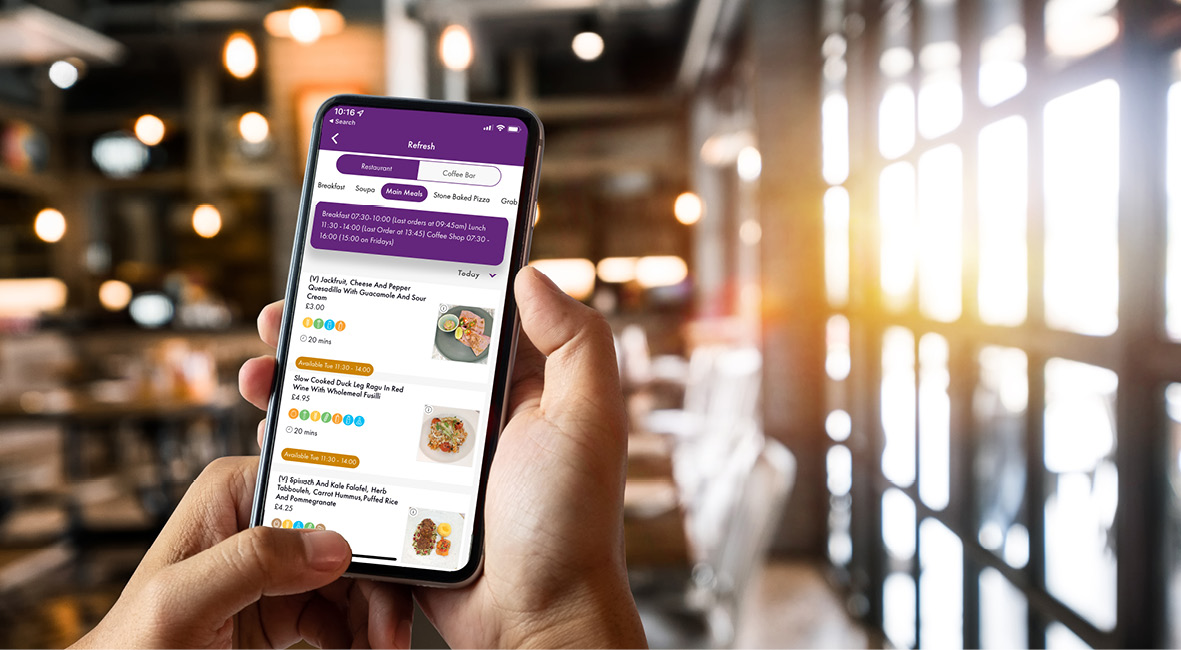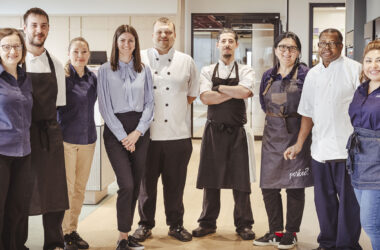Expert Guides
Contract catering trends and challenges in 2022

Food Futurist, Simon Stenning hosted an exclusive event for BM’s clients. Simon outlined the challenges and trends for food service operators in 2022.
Customers at both ends of the spectrum
A consumer survey2 by CGA identified two ends of the consumer spectrum, naming them the cautious ‘homo-trepidations’ and ‘splash the cash’. 17% of consumers agreed that they plan to be more careful with their spending and 21% planned to treat themselves. Contract caterers will need to cater to both groups of customers.
The changing consumer
Some of these changes in consumer behaviours that occurred during the pandemic will remain. Not everyone was in the same boat, in terms of keeping their jobs and working from home. There will need to be a careful balance in how operators respond to the diverse needs of clients and consumers. Covid-19’s impact has led to a more polarised society: cash rich and time rich, versus cash poor and time poor. Contract caterers will need the agility to react, diversify and drive loyalty to create more experiences, and not just at the higher end of scale. Customers will expect true value from every experience.
As a result of working from home, consumers have enjoyed a better work-life balance. This is likely to culminate in more three/four day working weeks for offices. For contract caterers, Tuesdays, Wednesdays, and Thursdays will be the most important days. To bring value to clients, contract caterers will need to work hard at keeping customers in the building for their food and drink experiences.
Customer expectations have increased. They want more purpose to their food including ethical, sustainable, and local ingredients. Publishing an annual CSER report is no longer enough, ESG goals will have to be constantly lived by the whole organisation. Consumers can tell the difference between something that is genuine or just ‘lip service’.
Purpose
Research suggests that consumers looking for more purpose are four to six times more likely to purchase, protect and champion purpose-driven companies3, this includes choosing to work for them. An important point to note for anyone looking to recruit in a tight labour market. Read BM’s expert guide on attracting and retaining talent in the hospitality sector here.
Fulfilment
Purpose guides us towards fulfilment rather than achievement. BM puts purpose and fulfilment into action – collaborating with social enterprises like Migrateful, an award-winning charity. They use cookery classes to rebuild the lives of refugees and migrant chefs from around the world. This collaboration is a brilliant example that allows BM to meet consumer desires for purpose and authenticity.
New propositions
Different consumer demands need different propositions. Expect to see more of the following.
Hybrid hubs – combining residential, office, retail and/or hospitality space
Social refuelling – informal, fast, casual and on-the-go consumption
Food markets/halls – for an artisan food and drink experience
Leisure-tainment – for group occasions and competitive socialising
Destination dining – for expert service and specialised cuisine
Hospitality at home – offering an on-premises experience at home
All these can influence and inspire a contract caterer’s offering.
Paradigm shift in technology
The pandemic has accelerated digital ordering systems in hospitality, which appear to be driving up spend-per-head. Smart operators will increase the use of automated machinery to do repetitive tasks to create a more tailored and personalised experience. For example, by switching their labour away from processing order and payments toward the front counter and production of tailored personalised fresher food.
Technology also takes us into a brand-new era – the rise of virtual brands.
TikTok partnering with Virtual Dining Concepts (VDC) launched TikTok Kitchens, a delivery-only service that will deliver a menu inspired by food trends popularised on TikTok. TikTok Kitchens will make use of a restaurant brand’s existing kitchen and employees but will provide the training, food packaging, and TikTok-sourced recipes.
Virtual Hero launched virtual food brand – Sides. It was developed in collaboration with YouTube content creators, The Sidemen. The concept combines pop-culture references with chicken dishes. Facilitated by REEF, the world’s largest operator of virtual restaurants, it was initially available for delivery-only but has now opened in Boxpark.
All these examples show how the latest digital technology is impacting foodservice.
Americanisation
US inspired or US franchised brands have been a trend for a long time, but it has increased significantly recently. Over 100 new outlets opened in the last six months, mainly replacing casual dining brands.
What’s next?
Operators must create more ‘wow’ and incredible eating out experiences. Examples include Red’s True Barbecue donut burger! But consumers will want to balance their food ‘debit and credit’, which also means eating ‘worthy’ food.
Worthy and wow
We’ll see demand for more plant-based and ethical food alternatives. Customers will expect to see concepts like the impossible burger, a plant-based substitute for traditional meat-based burgers that mimics the flavour, aroma, and texture of beef.
Customers have learnt to cook at home, unsurprisingly they now want more of an experience when they eat out. How about offering drinks that provide collagen infusions or hyaluronic acid?! They definitely answer the requirement for “I want to feel good and look good” or in the words of the L’Oréal advert, “because I’m worth it!”
Worldly
Customers will be even more worldly in their food expectations. Everything from Japanese katsu sando to Korean fried chicken to visiting Alkebulan. Opening in London this year, it’s the world’s first African dining hall, celebrating an untapped cuisine. The evidence for a consumer appetite for authentic and varied worldly cuisine is seen in the huge queues for street food trucks, contrasted with quiet scenes at old high street staples.
Woke
Customers want worldly food but at the same time they know that they’ve got to be a bit more local, sustainable and ethical. And they know it’s not possible for the hospitality industry to go out foraging all the time! But there is a theme. Consumers are becoming more aware of the bigger picture and the carbon footprint of what they’re eating. Waitrose describe this food trend as ‘climatarianism’. This means selecting food that has the least environmental impact and avoiding those with a high carbon footprint. BM has developed Eat with the Earth in Mind, little gentle nudges and education to help customers make lower earth impact choices.
Wacky
Food presentation is changing. How can operators create fully immersive experiences? Foremost it’s about delivering an experience consumers can’t replicate at home.
The ingredients for success
To provide everything from 5-star dining to fast food ‘Americanisation’, contract caterers will need agility.
If consumer incomes go down, value and loyalty will become even more important. It’s not just the price, food service operators will need to deliver tangible value. The successful contract caterers will do this by understanding exactly what consumers want and value.




